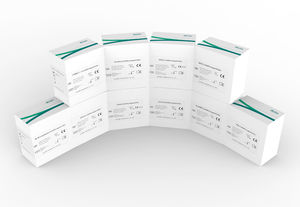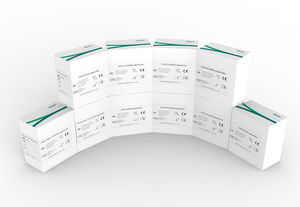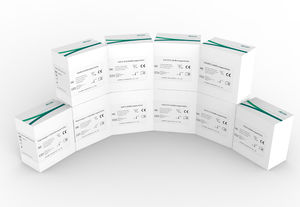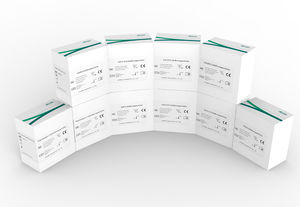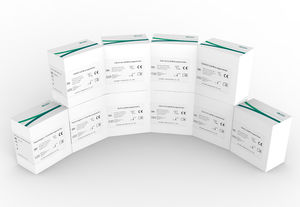
- Laboratory
- Laboratory medicine
- Ovarian cancer test kit
- Autobio Diagnostics
Ovarian cancer test kit CMB0602oncologyCEAcancer antigen 125
Add to favorites
Compare this product
Characteristics
- Applications
- for ovarian cancer
- Application field
- oncology
- Tested parameter
- CEA, cancer antigen 125, HE4
- Sample type
- clinical
- Sample volume
0.025 ml, 0.05 ml
(0.00085 US fl oz, 0.00169 US fl oz)
Description
Ovarian cancer is the second most common gynecologic malignancy in developed countries and the third most common gynecologic malignancy in developing countries (cervical cancer is the most common) [1].Estimation of cancer antigen 125 (CA125) levels and transvaginal sonography are the best and most frequently recommended methods for diagnosing ovarian cancer [2,3,4]. HE4 and CA72-4 determination is the best approach to confirm the benign nature of ovarian endometrioma in women with high CA125 levels. [5]
Clinical Significance
when measured together with other tumoral markers (such as CA19.9 or CEA)CA125 was assessed by numerous investigators regarding its utility as a marker of stage, disease status, prognosis or even in the screening of ovarian cancer. [6]
HE4 is the most useful marker for the differ-ential diagnosis between EOC and ovarian endometriosis[7]. Different studies propose the use of a Risk of Ovarian Malignancy Algorithm (ROMA) to improve the sensitivity and specificity of the combined use of both HE4 and CA125 in patients with abdominal masses.[8]
CA 72-4 is a tumor marker for gastrointestinal cancer and ovarian cancer. Compared with CA125, the positive rate of CA72-4 is higher in mucinous ovarian cancer. The combination of the two tumor makers can improve the diagnostic sensitivity of ovarian cancer.
Catalogs
No catalogs are available for this product.
See all of Autobio Diagnostics‘s catalogsRelated Searches
- Autobio Diagnostics test kit
- Solution reagent kit
- Autobio Diagnostics blood test kit
- Autobio Diagnostics serum test kit
- Plasma assay kit
- Infectious disease detection kit
- Diagnostic reagent kit
- Respiratory infection test kit
- Autobio Diagnostics clinical test kit
- COVID-19 detection kit
- Clinical chemistry analyzer
- Bacteria reagent kit
- Antigen assay kit
- Clinical reagent kit
- IgG test kit
- Automatic clinical chemistry analyzer
- Benchtop clinical chemistry analyzer
- Laboratory detection kit
- Autobio Diagnostics cell test kit
- Microbiology reagent kit
*Prices are pre-tax. They exclude delivery charges and customs duties and do not include additional charges for installation or activation options. Prices are indicative only and may vary by country, with changes to the cost of raw materials and exchange rates.


